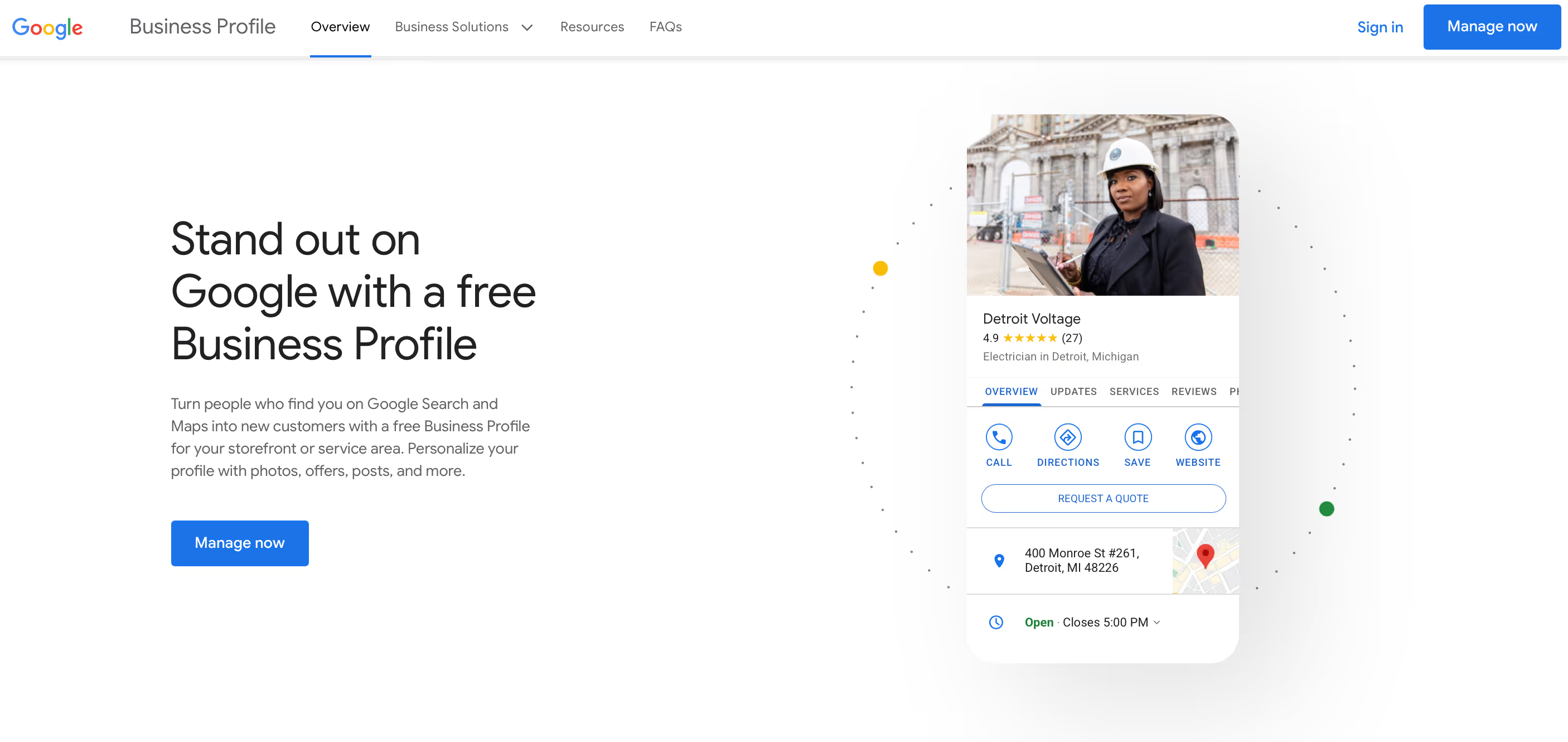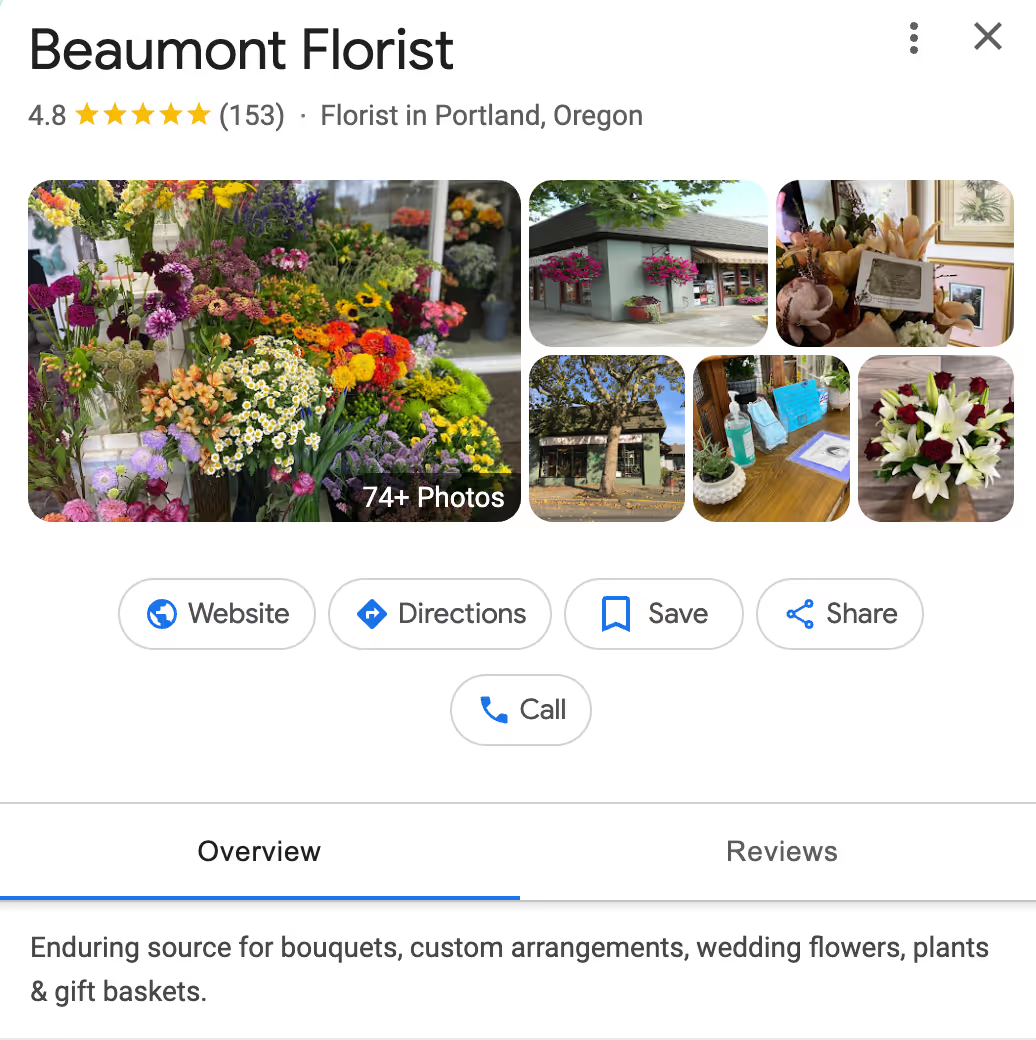You’ve built a strong business, offering great products or services. Yet, despite your best efforts, potential customers aren’t finding you online as you’d like.
Your Google Business rankings could be the reason. The position your business holds in Google search results directly impacts how readily customers can find you.
Keeping a close eye on your local search ranking is important for staying ahead of the competition.
It not only helps you see how well you're performing but also provides insights into areas where you might improve.
I will discuss what Google Business rankings are, how to check them, and actionable steps to improve your online presence.
What you will learn
- How Google Business rankings influence your online presence
- 3 methods to check your GBP rankings
- Factors that impact your rankings
- 5 Practical tips to improve your local SEO rankings
What are Google Business rankings?
Google Business rankings refer to where your business appears in local search results when someone looks for services or products similar to what you offer.
For local businesses, these rankings are huge as they impact local searches—they’re what gets you noticed by nearby customers.
Think about it this way: you own a Bakery in Paris, and someone nearby searches for the “best bakery in Paris.” Here's an example:

Your local ranking decides if your business shows up right at the top of the search result, somewhere in the middle, or way down where hardly anyone clicks.
One of the major factors influencing this ranking is your Google Business Profile (GBP), formerly known as Google My Business (GMB).

This business profile has all the important details like your location, contact info, hours, and customer reviews.
The more you optimize this profile, the better your chances of ranking high, so more people find you easily.
Why is it important to track your Google Business rankings?
Tracking your Google Business rankings is important because it helps you stay visible to local customers actively searching for your services. It helps you stay competitive, attract more customers, and grow your revenue.
When you appear at the top of search results, potential customers see your business first, which significantly increases the chances they’ll choose you over a competitor.
According to Statista, 21% of U.S. consumers use the internet daily to find a local business. With so many people relying on daily searches to find businesses nearby, appearing in the top results becomes very important.
Think of it like prime real estate online—top rankings mean higher visibility, more clicks, and, ultimately, more foot traffic or inquiries.
- People will trust a local business that ranks at the top of local search rankings. If you're in the top three listings, potential clients are more likely to view you as a trusted, credible option.
- Monitoring your ranking means you can identify trends, understand what works to attract attention and adjust your marketing strategy to maintain or improve your position.
The bottom line is simple: better local rankings mean more customers and more customers mean higher revenue.
If you’re not tracking where you stand, you’re missing out on data, so make it a priority to regularly check Google Business rankings.
3 ways to check your Google Business rankings
There are three simple, effective ways to check your Google Business rankings. We will list these methods and explain them step-by-step to help you track your local search performance in search results.
1. Using a manual Google search
The simplest way to check your Google Business ranking is to manually search on Google. Type relevant search queries into the search bar and see where your business appears.
However, to get an accurate understanding of your ranking, you need to make sure that you’re viewing the results as a neutral searcher, not one influenced by personalized factors like your search history or Google account.
For the most accurate results, conduct your search in incognito mode, making sure you're logged out of your Google account.
For example, if your business is “Billy’s Bakery,” a quick search “bakeries near me” reveals that your bakery business ranks in position 7 for local results in New York.

2. Using a Google Maps search
Another way to check your Google Business rankings is through Google Maps. This method is particularly useful for local businesses that rely on foot traffic, like restaurants, retail stores, and service-based businesses.
Since Google Maps prioritizes search results based on proximity, checking how your business ranks here gives you a good idea of how well you're performing in local searches.
To check your Google Maps ranking:
- Open Google Maps
- Enter a relevant keyword with your location (e.g., “coffee shop near me”)
- Review where your business appears in the local listings.
Keep in mind, though, that your ranking can shift depending on where you are when you search.
Someone searching for a “coffee shop” two miles away from your business will see different results than someone right around the corner.
For this reason, it’s helpful to check your rankings from different locations to get a more accurate picture of how visible your business is in various parts of your area.
Also, try experimenting with different keywords. People might search for “coffee shop,” “café,” or “best latte,” all of which could yield slightly different results.
Here’s an example when using the Google Maps method:

3. Using a rank-tracking tool
While manual searches provide a snapshot of your rankings, a rank tracker tool gives you a more comprehensive view of how your business performs over time.
These tools automatically track your Google Business rankings for specific keywords, monitor changes, and offer insights on how to improve.
You can also use Surfer to monitor how your pages are ranking.
Rank Tracker is quick to set up and helps you stay on top of changes over time by doing this:
- Click Tools in the left-hand menu of your Surfer dashboard
- Select Rank Tracker, then click + New Rank Tracker Project
- Name your project, enter your URL, add the keywords you want to track, then hit Create Project
You’ll now see a dashboard showing keyword positions, ranking trends, and changes over time—all in one place.

Another popular option is Localo, a tool specifically designed for checking local search rankings. With Localo, you can track your business's performance on Google Search and Maps, receive regular ranking reports, and get insights into areas where you can improve.
You can get started by checking your rankings with Localo’s free Rank Checker to see where your business currently stands.
Here’s an example using a rank tracking tool; in this case, we used Localo:

Other tools like BrightLocal and SEMrush also offer local rank tracking.
These platforms often come with additional features such as competitive analysis, reputation management, and detailed performance tracking over time.
3 factors that influence Google Business rankings
Standing out on Google takes more than just a business listing—it depends on a few key elements that Google prioritizes.
Let’s take a closer look.
Relevance, distance, and prominence
Google considers three main factors when ranking businesses in search results.
- Relevance makes sure that your business matches what a user is searching for, such as showing Italian restaurants for “Italian food.”
- Distance factors determine how close your business is to the searcher, favoring nearby options.
- Prominence measures your business’s reputation and trustworthiness using signals like review count, average ratings, website authority, and online mentions to boost visibility in search results.
Customer reviews and ratings
They’re social proof, showing Google that real people are having good experiences with your business.
Both the number and quality of your reviews make a difference. If you have hundreds of positive reviews, you’re likely to rank higher than a business with just a handful.

What’s in those reviews also matters—when customers mention specific services or products, it helps Google understand what your business offers, which can boost your relevance in searches.
Business information
Google wants consistency everywhere online—your business name, address, phone number (NAP), and website URL all need to match.

If there are any inconsistencies, it can confuse both Google and potential customers, which can hurt your ranking.
Your Google Business Profile should include:
- A clear business description that accurately reflects what you offer
- Your correct business hours
- Your location, including any special instructions for finding your business
- High-quality photos of your products, services, and location
5 tips to improve your Google Business rankings
Now that you understand the factors influencing your Google Business rankings, let's explore actionable steps you can take to improve your position in search results.
1. Complete your Google Business Profile
Make sure your profile is 100% complete. This means adding your business's name, address, phone number, website, and a detailed description of what you offer.
Include high-quality photos of your products, services, and physical location. The more information you provide, the easier it is for Google to match your business with relevant searches.
For example, let's say you own a flower shop in Portland. Your profile could include details like the types of flowers you offer, such as custom arrangements, wedding flowers, plants, and gift baskets.

Also, adding photos of your products and location, along with contact options like directions, a website link, and a call button, makes it easy for potential customers to find and connect with you.
2. Encourage customer reviews
Positive reviews can significantly boost your Google Business ranking. Make it easy for satisfied customers to leave reviews.
You can send follow-up emails after a purchase with a direct link to your Google Business Profile or ask for reviews in person at your location.
When responding to reviews, be prompt and professional. Thank customers for positive feedback, and address any concerns raised in negative reviews.
Here’s an example of how a business can respond to a negative review professionally.

The customer mentioned issues with the food's flavor and portion size, and the business promptly replied with an apology and invited the customer to reach out directly with more details.
This approach shows the business's willingness to listen and resolve any issues, which can help rebuild trust with the customer.
Your responses not only show you care about customer satisfaction but also signal to Google that your business is active and engaged.
3. Use local keywords
Incorporating local keywords into your Google Business Profile and website helps Google understand what your business offers and where it’s located.
These keywords should naturally work in your business description, product listings, and any posts you create on your profile.
Here is a great example of a bakery in London that includes relevant keywords in its business description, such as “homemade,” “artisan products,” and “baked goods.”
Using these keywords helps attract local customers and improves their visibility in search results.

This not only helps your profile rank higher in local searches but also ensures that you’re attracting the right customers.
4. Post regularly on your Google Business Profile
Keeping your Google Business Profile active by posting updates, special offers, or events shows Google that your business is engaged with its audience.
Regular posts can improve your relevance for certain search terms and keep potential customers informed about what’s happening at your business.
Let's say you're a restaurant owner. You could post about daily specials, upcoming events, or new menu items.
Here’s an example of a restaurant showcasing its menu on Google Business.
This profile includes detailed sections like breakfast options, coffee, and specific items like the "Breakfast Sammy" and "Pumpkin Spice Latte," along with prices.

5. Optimize for mobile
Most local searches are conducted on mobile devices, so websites and Google Business Profiles must be mobile-friendly.
So here's what you must do: make sure your site loads quickly, is easy to navigate, and provides a seamless user experience on smartphones and tablets.
Google favors businesses that offer a smooth mobile experience, so optimizing for mobile can improve your rankings.
Key takeaways
- Regularly track your Google Business rankings to stay competitive in local search
- Use manual and Google Maps searches or a rank tracker to get accurate rankings
- Optimize your Google Business Profile and create complete business information
- Encourage customer reviews to boost local rankings and build trust with potential customers
- Use local keywords in your business profile and posts
- Post regularly on your Google Business Profile to increase your visibility
- Make sure your website is mobile-friendly to improve local search performance
Your business needs visibility with local customers, and monitoring your Google Business profile rankings plays an important role in reaching them.
Following the steps in this guide will help you improve your Google Business rankings, making it easier for local customers to find you.
But this isn’t a one-time task. Maintaining a strong ranking requires regular profile updates, gathering customer reviews, and trying new local SEO strategies.
With consistent effort, you’ll see your business grow and attract more local customers.





.avif)

